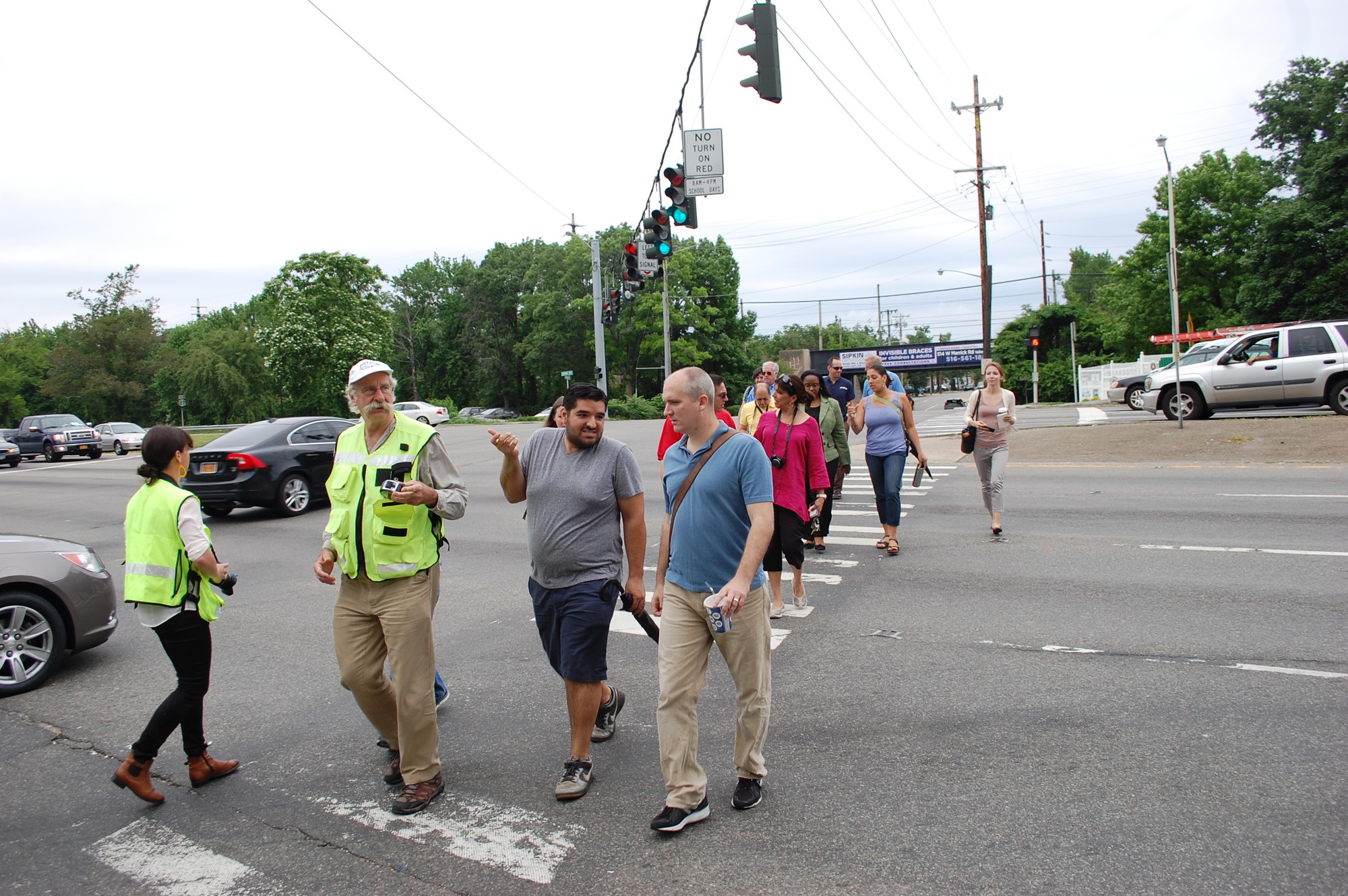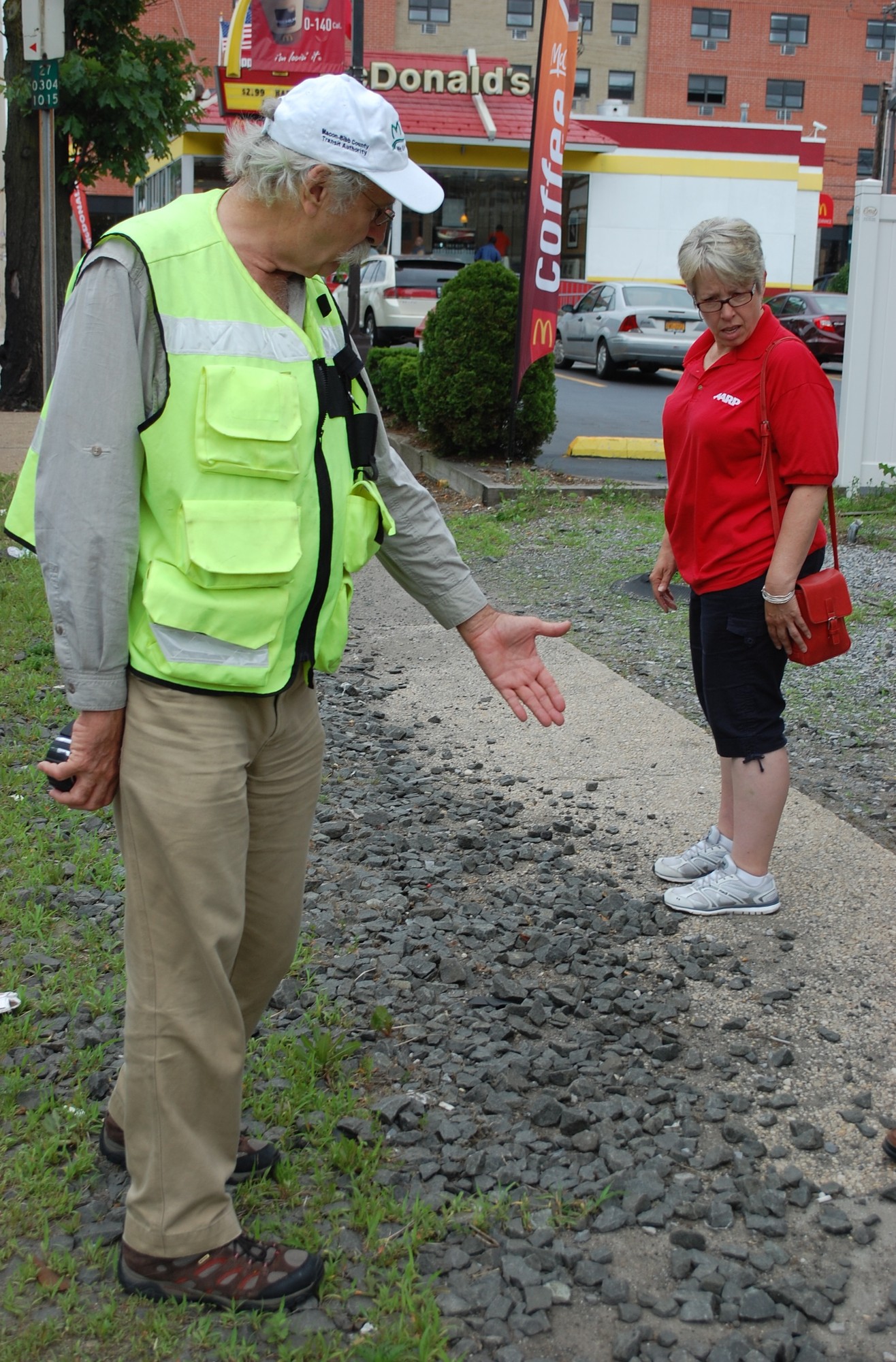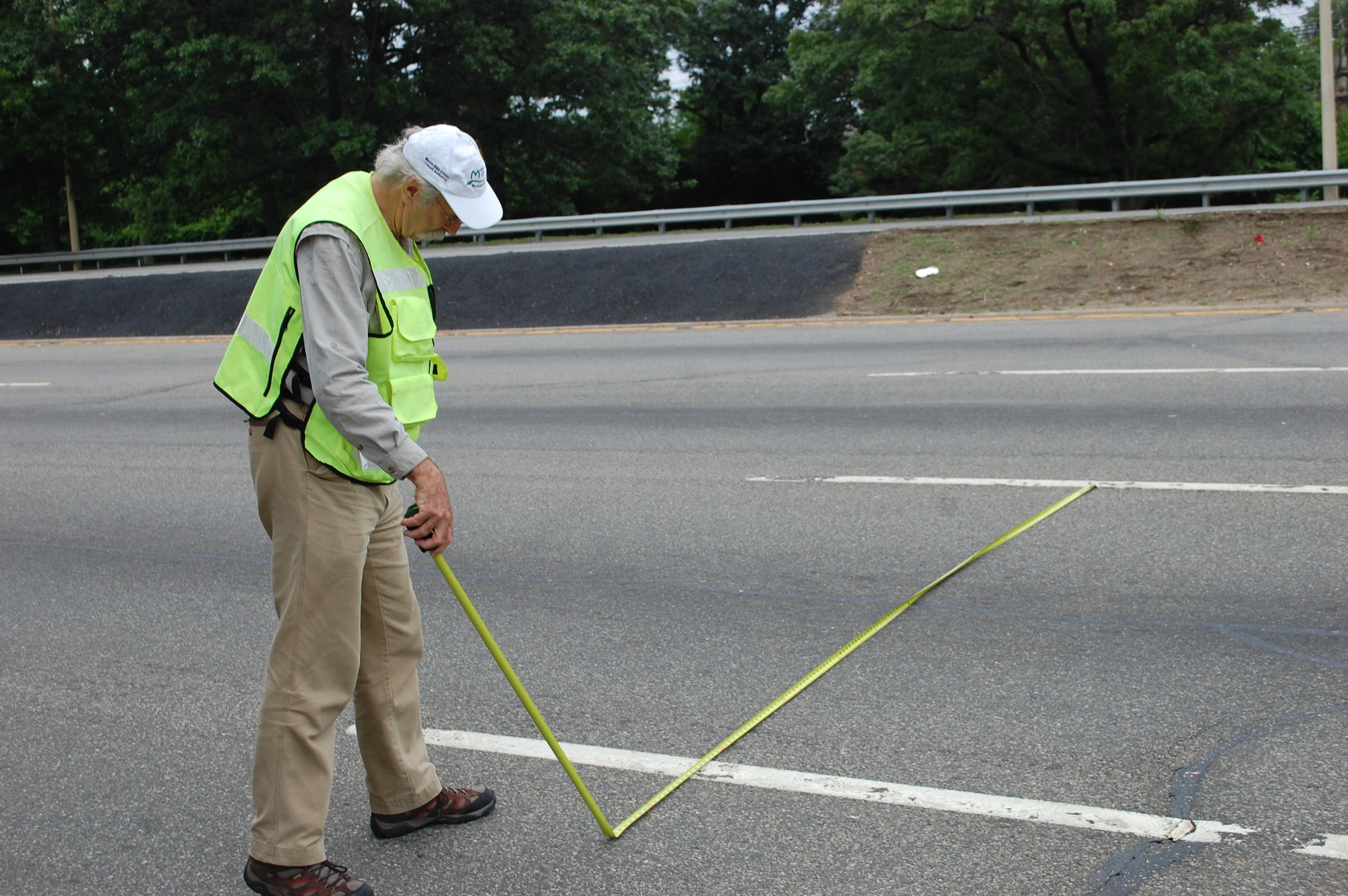Rethinking Sunrise Highway
Expert suggests safety improvements for benefit of pedestrians
A noted transportation expert visited Valley Stream and two other Nassau County communities last week in an effort to show local residents and leaders how to make their streets safer for pedestrians.
Dan Burden, executive director of the Walkable and Livable Communities Institute, in Washington state, focused specifically on Sunrise Highway, a major east-west road that spans Long Island’s South Shore. He cited issues that pose problems for pedestrian safety, and made suggestions on how to promote walking over driving.
The “walkability assessment,” on June 19, was hosted by Vision Long Island, the Tri-State Transportation Campaign and AARP, and also included visits to Baldwin and Freeport.
Valley Stream was the first stop on the tour, beginning at 9 a.m. at the northeast corner of Sunrise Highway and Central Avenue. Burden was joined by nearly 20 local residents, civic leaders and village officials.
He immediately went to work, noting flaws such as the lack of a crosswalk on the west side of the intersection. During the tour, participants watched several people cross there, some against the light. When pedestrians are “punished” with a lack of safety features, Burden explained, they are more likely to take risks.
Existing crosswalks were well marked but should be wider, he said. He also noted the wide turning radius for cars making the right from Mill Road onto Sunrise, explaining that this allows cars to turn at higher speeds, and while it gets more vehicles through a green light, it compromises pedestrian safety.
As the group headed along the south side of Sunrise, Burden noted the guardrail that separated the sidewalk from Mayor Edward W. Cahill Park. The guardrail, he said, should instead separate the road from the sidewalk, especially with the volume and the speed of traffic in the area. With a posted 40 mph speed limit, Burden said, cars could be traveling 50 mph or faster.
Village Trustee Vincent Grasso expressed his reservations about such a change taking place anytime soon. “Something like that would take years to work its way through the state Department of Transportation,” he said, “yet is seems like a no-brainer.”
Wide lanes, fast cars
During a break in the traffic, Burden stopped to measure the lanes, and found that they are 11 feet wide. “If you want people to speed, you provide wide lanes,” he said. “Motorists are slightly safer with narrower lanes.”

 57.0°,
Partly Cloudy
57.0°,
Partly Cloudy 











